
The Il Chamus or Njemps tribe still exist as they did thousands of years ago fishing in the spectacular lake Baringo using a hand made rafts made of reeds….not a new invention but still something very innovative and obviously successful otherwise it would have been abandoned centuries ago. They are unique people, though linguistically related to the Masai and Samburu, they have broken from tradition and also fish which is taboo among the Maasai tribes who will not even touch let alone eat fish.

The raft is made from reeds called ambatch harvested from the shores of the lake and it takes only a day to build one. The balsa wood reeds are strung together and tied using sisal fibres and paddles are traditionally made from planks of hand sized planks of wood. Today most fishermen used plastic pieces cut from used jerry cans. The rafts last for over a year and though they look flimsy and unstable, they are well adapted to the lake which is very flat and calm. How but how they escape from the hundreds of hippos is anyones guess.
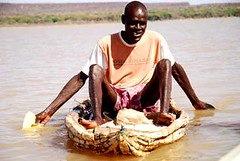
Living on the islands in the middle of Lake Bogoria boats are critical or the survival of the Il Chamus. Each boat seems to be one man outfit and men have carved out territories on the lake in which they fish. Each fisherman works in the early morning hours and using line and nets, he catches a variety of small carps and lungfish for home and sale to passing people. In a day one man can catch only a handful of fish and will earn about US $1.50 through sales. The Il Chamus are one of a handful of tribes left in the world that use this kind of traditional method of fishing.
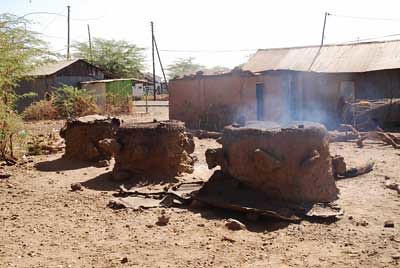
To preserve fish they are smoked in traditional smoking houses. Fish are laid on top of the wire mesh and smouldering charcoal from wood of various indigenous species of trees are placed in the entrance.
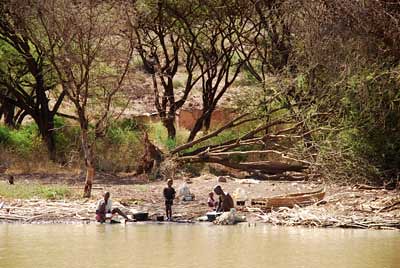
Il Chamus are agro pastoralists and still live a very basic lives. They move their livestock from islands to mainland – but their rafts can carry goats and sheep but not cattle so they simply drive cows into the water forcing them to swim across the lake, which is 8 m deep. The herd is guided them from rafts.
If you live in Kenya and haven’t been out to Lake Baringo – you are missing an amazing piece of living pre-history.
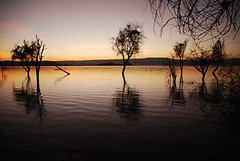
There’s hardly any information available online on this amazing tribe – if you have any or know where to find more information please let me know.

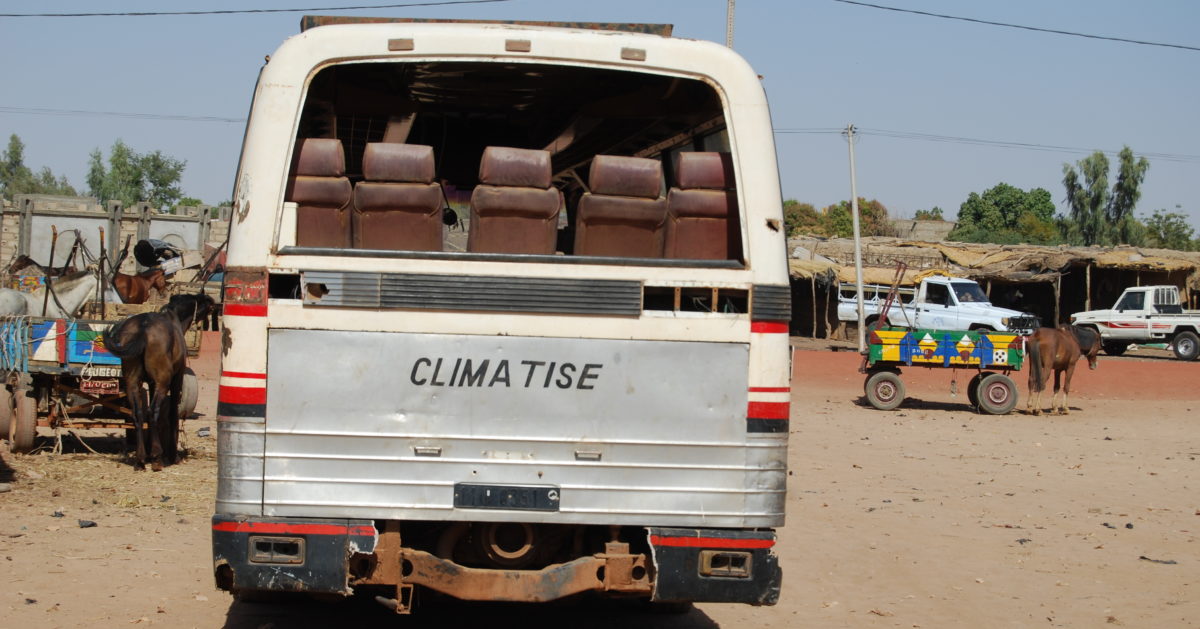

I just stumbled on to your blog and found it very interesting. Africa is one place I need to visit. Does this tribe comprise a large number or are they only a handful?
Visiting Africa is at the top of my bucketlist. I love the ingenuity that is displayed on your site. Posts like this also serve are a great treat in the technical mix. I feel that they expose me to a slice of the soul in this continent.
Hi Dylan and Chet, thanks so much for your comments. The varied contributors of Afrigadget make for the curious mix – as an environmentalist I am personally on the lookout for for practical inventions that serve energy, food or environmental needs. To answer your question Dylan, the Njemps are a very small and vulnerable tribe. They live on tiny islands in a small lake – if this part of Kenya develops they will be absorbed and will probably disappear as a unique tribe 🙁
It hasn’t happened yet but the switch from wooden paddles to plastic is a sign that things are slowly changing…..Chet you should accelerate your trip to Africa, come and experience the incredible diversity of this continent while it’s still relatively innocent. See you soon?
Hi Dylan, just so you know, reed boats are also used in the highlands of Ethiopia on Lake Tana. They are called tankwa. Some scientists believe that these boats, exactly the same as the ones used by the Egyptians lower down the Blue Nile (The source of the Blue Nile is in Ethiopia)were brought down by Ethiopian trade. Who knows but seeing how versatile these boats are, who wouldn’t want to copy them ? Kenya isn’t that far either…
I have two of these and even though your bottom gets soaked, they’re lots of fun. With the wider and longer ones, you can carry hundreds of Kilos of firewood.
Paula, if it’s any consolation, there are big motor-driven boats on Lake Tana but because of the affordability of the tankwas, the boats might survive much longer than you think.
Cheers,
Jipé